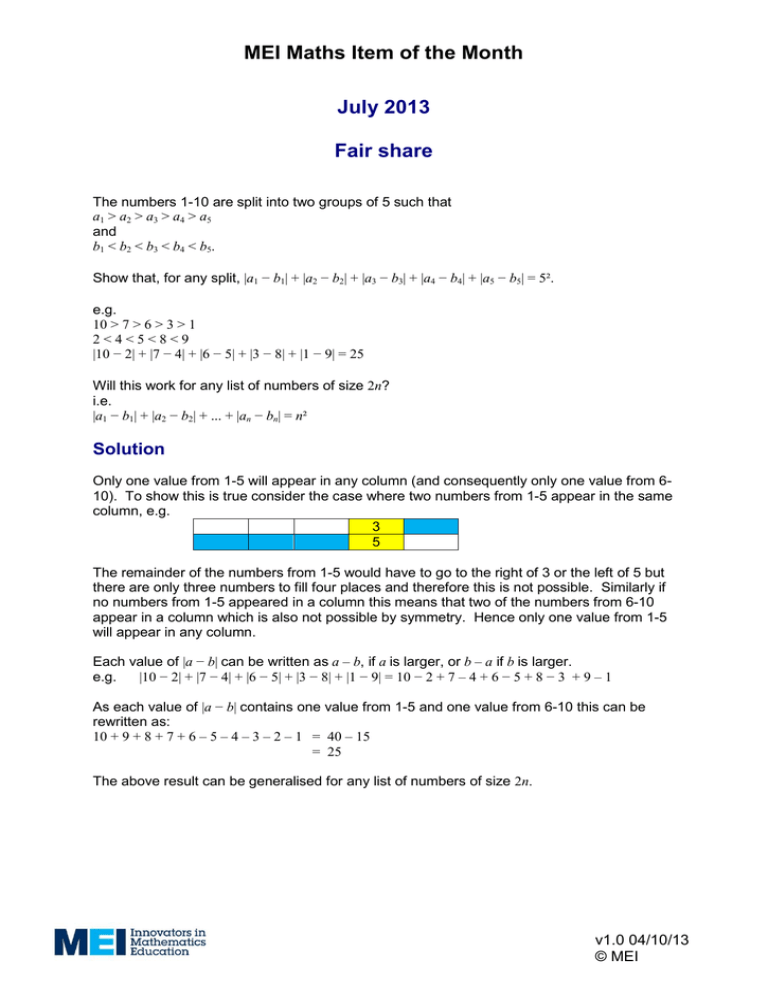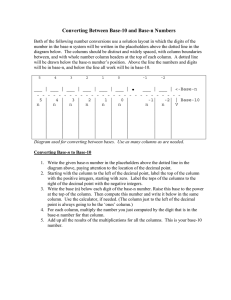MEI Maths Item of the Month July 2013 Fair share
advertisement

MEI Maths Item of the Month July 2013 Fair share The numbers 1-10 are split into two groups of 5 such that a1 > a2 > a3 > a4 > a5 and b1 < b2 < b3 < b4 < b5. Show that, for any split, |a1 − b1| + |a2 − b2| + |a3 − b3| + |a4 − b4| + |a5 − b5| = 5². e.g. 10 > 7 > 6 > 3 > 1 2<4<5<8<9 |10 − 2| + |7 − 4| + |6 − 5| + |3 − 8| + |1 − 9| = 25 Will this work for any list of numbers of size 2n? i.e. |a1 − b1| + |a2 − b2| + ... + |an − bn| = n² Solution Only one value from 1-5 will appear in any column (and consequently only one value from 610). To show this is true consider the case where two numbers from 1-5 appear in the same column, e.g. 3 5 The remainder of the numbers from 1-5 would have to go to the right of 3 or the left of 5 but there are only three numbers to fill four places and therefore this is not possible. Similarly if no numbers from 1-5 appeared in a column this means that two of the numbers from 6-10 appear in a column which is also not possible by symmetry. Hence only one value from 1-5 will appear in any column. Each value of |a − b| can be written as a – b, if a is larger, or b – a if b is larger. e.g. |10 − 2| + |7 − 4| + |6 − 5| + |3 − 8| + |1 − 9| = 10 − 2 + 7 – 4 + 6 − 5 + 8 − 3 + 9 – 1 As each value of |a − b| contains one value from 1-5 and one value from 6-10 this can be rewritten as: 10 + 9 + 8 + 7 + 6 – 5 – 4 – 3 – 2 – 1 = 40 – 15 = 25 The above result can be generalised for any list of numbers of size 2n. 1 of 1 v1.0 04/10/13 © MEI




